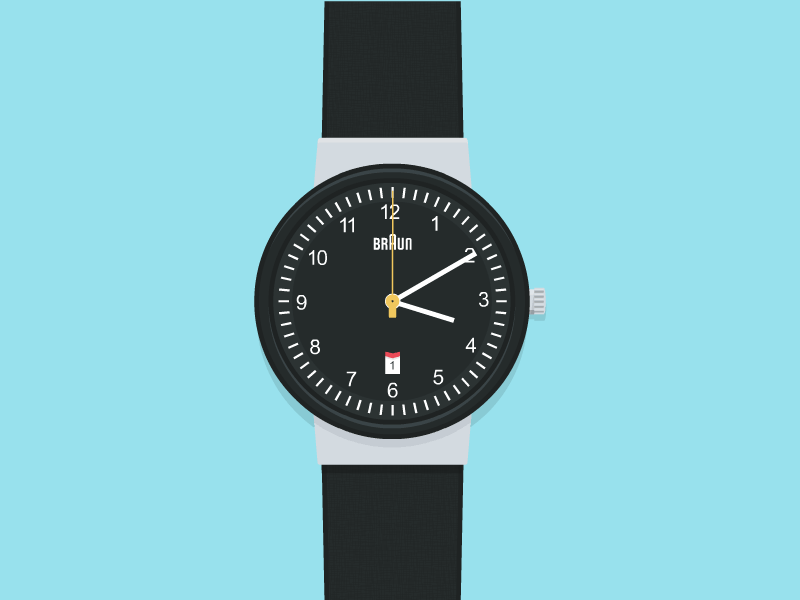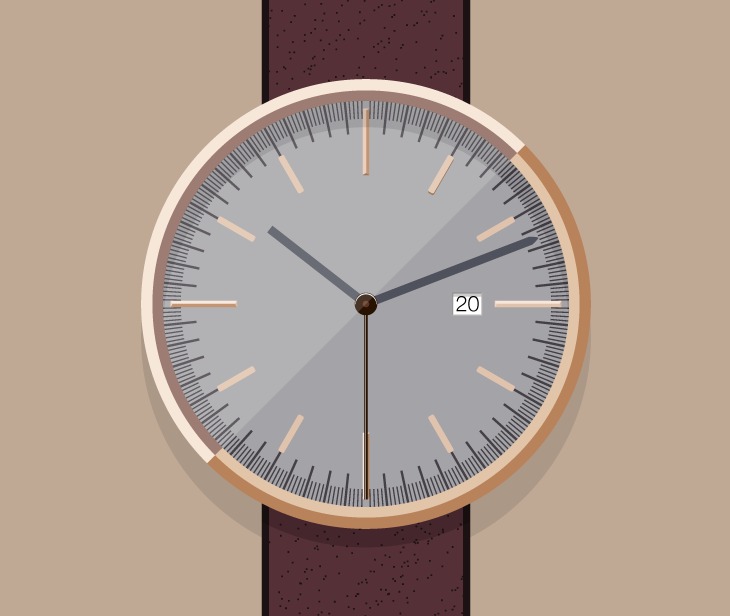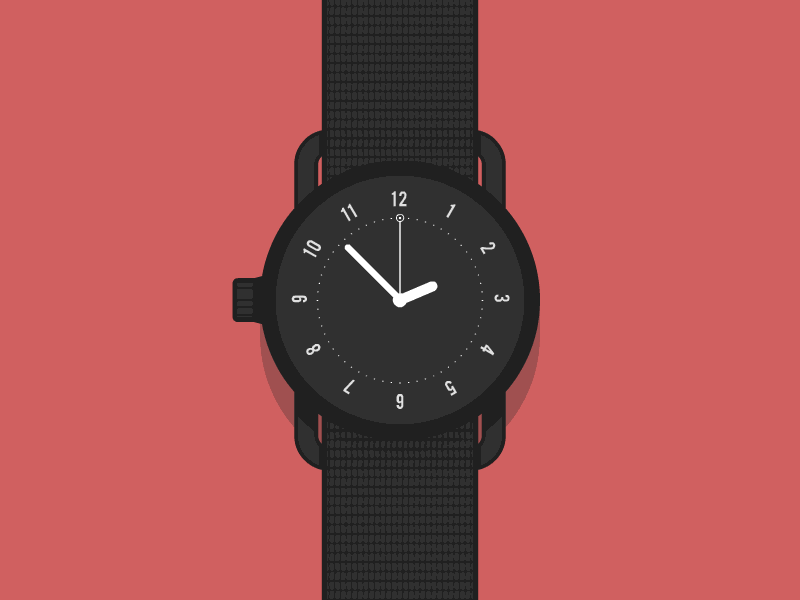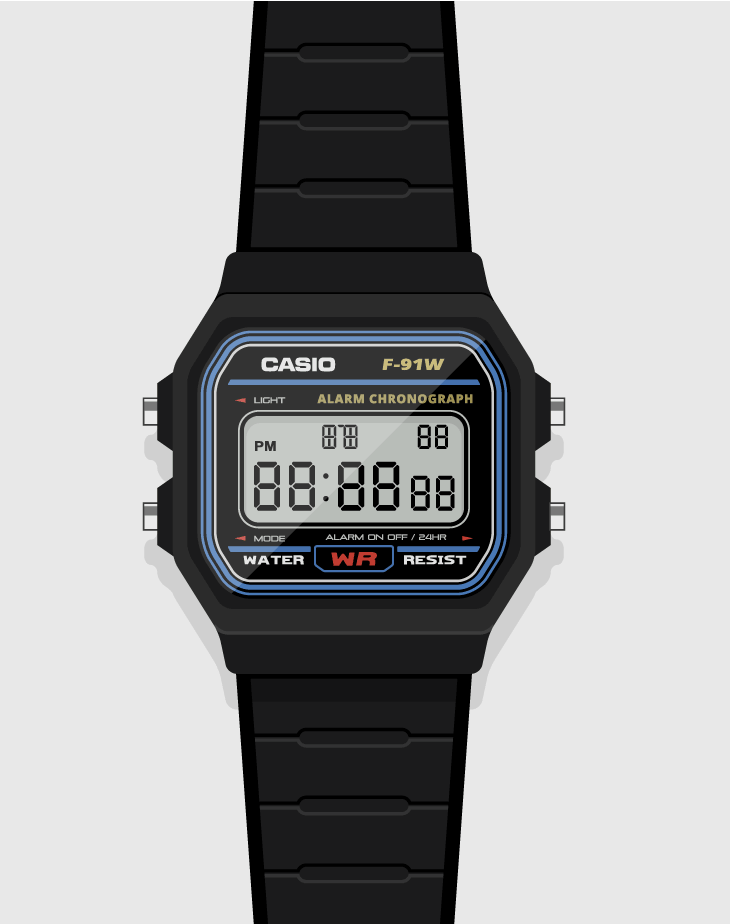 AA: When people see your finished work they might not understand what it is, or what was involved in illustrating it. Perhaps they believe you just used some fancy software to transform a picture of the watch into a digital illustration. Could you explain to lay people what is involved in turning watches into these animated illustrations online?
AA: When people see your finished work they might not understand what it is, or what was involved in illustrating it. Perhaps they believe you just used some fancy software to transform a picture of the watch into a digital illustration. Could you explain to lay people what is involved in turning watches into these animated illustrations online?
MJ: Imagine a painter who paints a landscape. They would start by staring at the landscape and studying every detail. Then they’d recreate the landscape on their canvas using their own style. That’s essentially what I’m doing with these watches, except instead of painting, I’m digitally illustrating the watches using tools on my computer. For my first watch, the Weekender, I illustrated the same watch in about five or six different styles. Each one resembled the real watch, but all varied in style. Once I chose the style I liked the best, I’ve done my best to stick with the same style on each new watch. The last step in posting the watch online is getting the hands to animate. I have to separate the watch into its moving parts, and then I use code to animate each watch hand individually.
AA: Reading about your motivations for starting Wrist.im, you mention that it was a project to help you learn more about illustration. Did you? What did you perhaps learn about the fundamentals of watch design?
MJ: I’ve definitely learned more about illustration, considering I knew almost nothing beforehand. Watches can generally be illustrated using simple shapes like circles and rectangles, so I’ve been able to focus on learning how to illustrate lighting effects. Metal, for example, was a hard material to illustrate in the style I chose, because it reflects light all over the place. I learned to simplify the lighting effect so it could be easily understood. As far as watch design goes, I’ve gained such an appreciation of the craft.

I’ve had to study and labor over the tiniest details of the watches I’ve illustrated so that I could recreate them accurately, and while doing that, I’ve noticed all the subtle details that really make the watch what it is. The size of minute markings, for example, makes a huge difference in the overall appearance of the face. The lengths and sizes of the hands can drastically affect the readability of the watch. Soon, I’d like to start illustrating my own watch designs, but I think I could benefit from recreating a few more classics first.
AA: What type of watch guy are you? What are some of your favorite models? What types of taste do you have when it comes to timepieces?
MJ: I generally find myself gravitating towards clean, minimal watches with white faces and leather bands. I’m not much of a sports watch guy, although I’ve seen a few that I’d wear if I had the chance. Often chronographs can feel too busy for my taste unless they’re done very simply. Speaking of chronographs done well, the Junghans Max Bill Chronoscope is at the very top of my wish list as my favorite watch. All the Junghans Max Bill designs are perfect and timeless. I love the Nomos Metro, as well, and all Nomos, for that matter.

A few more of my favorites are the Christopher Ward C900 Single Pusher Chronograph, the Biegert & Funk Qlocktwo W, the Jaquet Droz Grande Heure, the Braun BN0106 digital, and the Bell & Ross WW1 Régulateur.
AA: Your first project was interestingly enough something very pedestrian and simple, a Timex Weekender. People might imagine that after falling in love with high-end designs you’d go straight there, but most of your work is of very simple and inexpensive watches. My favorite is the digital Casio, by the way. You make these very accessible and basic watches look beautiful. Did that surprise you? Is there something to learn there in regard to design or watches overall?
MJ: I chose to start with the Timex Weekender for a few reasons. First of all, I own that watch. I try to stick with watches I actually own, because it’s much easier to get the lighting right when I can move it around and see how the light hits it. Second of all, I thought it was important to appreciate the beauty that can be found in a watch pretty much anyone can afford. Luxury watches don’t have a monopoly on good design, fortunately. There are plenty of smaller watch companies selling beautifully designed watches within the $150-$300 price range.

Obviously, you don’t get the same quality or movement you would find in a luxury watch, but you get a beautiful work of art that tells the time. What I like about the Weekender is that it’s not trying to be something that it isn’t. It’s a casual, playtime watch, and to that end, it succeeds. When I tackled the digital Casio, I knew I wasn’t recreating something inherently beautiful, but that watch has become so ubiquitous that it’s basically an icon of the early digital watch era. I wanted to capture that as best I could, and it’s one of my favorites as well.
The beauty that these illustrations have drawn out in simple watches tells me that we often overlook the ordinary. It’s very hard to not assign more aesthetic value to a watch that costs more money, but when you see the design details of a simple watch like the Weekender presented large and vibrantly, you can begin to appreciate the design.

